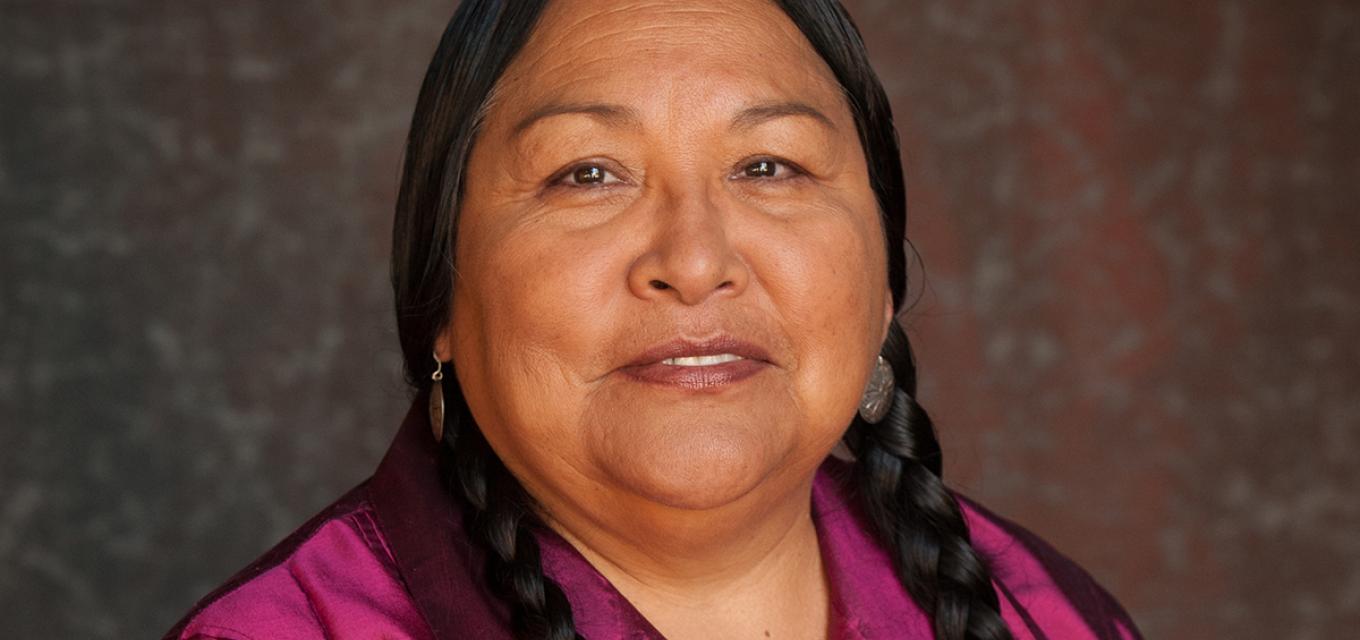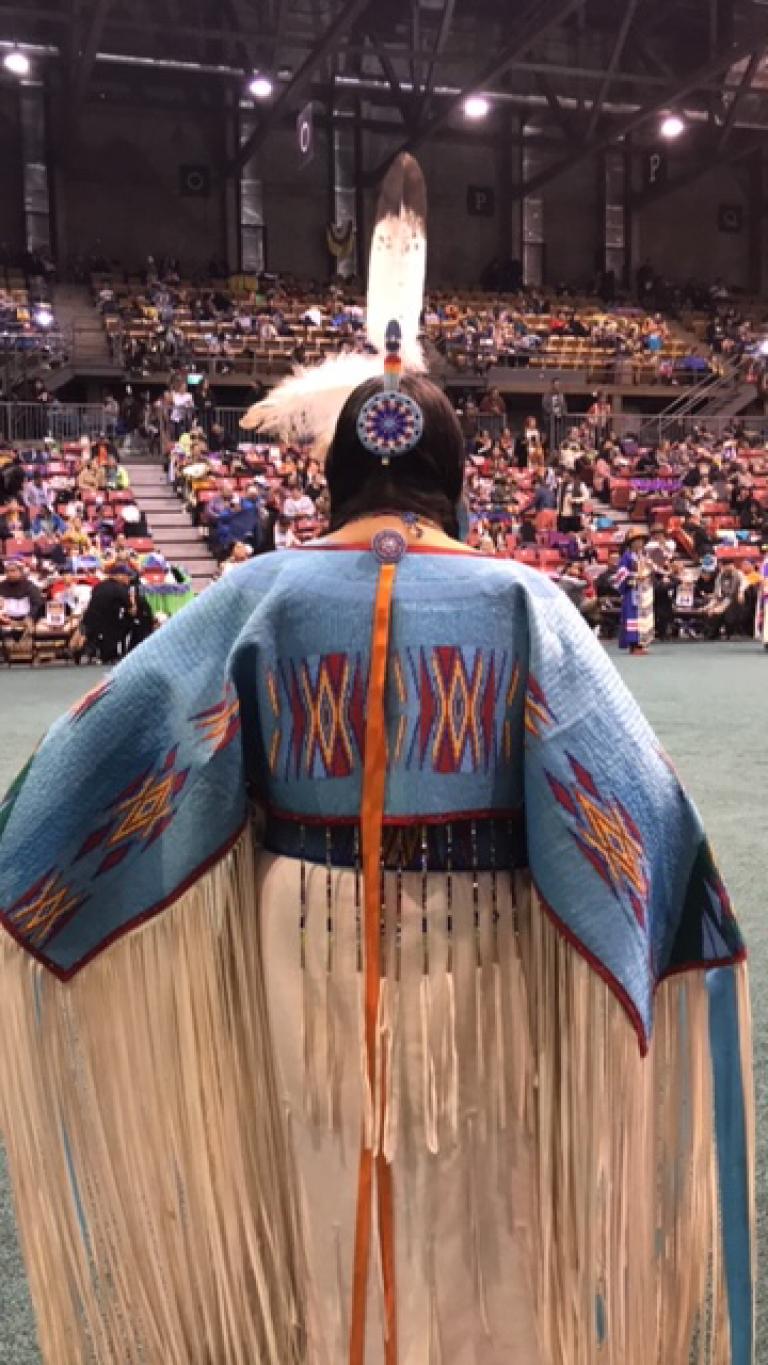News

Alumni profile: educational persistence
A living example of her dissertation
Iris HeavyRunner-PrettyPaint, PhD ’09, often says she is a living example of her own dissertation. She considers herself a Pisatsikamotaan, a “miracle survivor.” That term refers to Native students who are able to “persist” in non-Tribal institutions of higher education. Native retention rates in these types of institutions have been traditionally low, which is one reason tribal colleges and universities (TCU) were created. Her dissertation theory was for TCU students and helped them when they transferred to non-Tribal institutions. Actually, her work has led to greater Native retention rates in general.
HeavyRunner-PrettyPaint, an enrolled member of the Blackfeet Nation and descendant of the Crow Nation, received her undergraduate degree from Haskell Indian Nations University in Lawrence, Kansas. She then received a bachelor’s degree in social work from the University of Kansas. From there, she arrived at the University of Minnesota to pursue her master’s in social work.
“I always felt an affinity for social work values—they matched me culturally,” she says. “That was sort of a match I appreciated. When I started into the program it was where I realized that being raised within my community, everything—language, songs, ceremonies, and the way we learn—gave me an overarching framework for social work.”
While in the program, she was pushed toward examining her own background and experiences. What makes her people strong? Then-director of the program Esther Wattenberg told her, “I think you’re going to discover something that’s going to help yourself and help all of us as well.” What that turned out to be was the discovery of cultural resilience. “I looked at all the literature,” HeavyRunner-PrettyPaint says. “No one had ever put the word cultural before resilience. That was my introduction.”
This insight put her on the path for her graduate work. “I was going to study retention of tribal students,” she says. “And again I still had this question: What exists within a culture of people that causes them to not give up? Why was I able to finish a high school diploma and go on and do a bachelors and a masters in social work?”

She still had that “why me” question in her first semester as a PhD. “I was going to develop an Indigenous theory grounded in the story of tribal students,” she says. She took her work and moved to Montana to build a student retention theory. She worked with the University of Montana and four tribal colleges to conduct interviews with thousands of students. One day, she had the responses spread out over a table at her home and was coding them by their various themes or constructs. Suddenly she was given a gift.
In Native culture, “smudging” is the burning of Indigenous plants to purify or remove negative energy. “Every tribe has a different smudge that they burn,” she says. “Some use cedar, some use sage, and our tribe has a special kind of smudge that we do in the morning to cleanse our mind and welcome the day. When I did my coding, I smelled smudge. I was gifted with these constructs to help our students, our people.”
Since completing her dissertation, An Indigenous Theory on Educational Persistence Grounded in the Stories of Tribal College Students, she has traveled to several Ivy League colleges to all the tribal colleges throughout the country to speak on her model. “I still get calls today,” she says. “I just got a request from Montana State. They want me to teach the model to 150 teachers across the state.”
Presently, HeavyRunner-PrettyPaint is the vice president for organizational transformation at Kauffman & Associates, a Native and woman-owned management consulting firm based in Spokane, Washington. She had been a professor at the University of Montana prior. At Kauffman, she works to promote positive change in underserved communities. She is a leading expert on student retention, Indigenous evaluation, and suicide and substance abuse prevention within Native communities. For her wide body of work, she was named a CEHD Distinguished Alumni in 2019.
“It continues to come full circle for me. There isn’t anything I do that social work does not frame my perspective,” she says. “Miracle survivor. That’s what I am. That’s what the U of M nurtured and allowed me to grow and to become who I am today.”
Story by Kevin Moe | Photos courtesy of HeavyRunner-PrettyPaint | Winter 2021